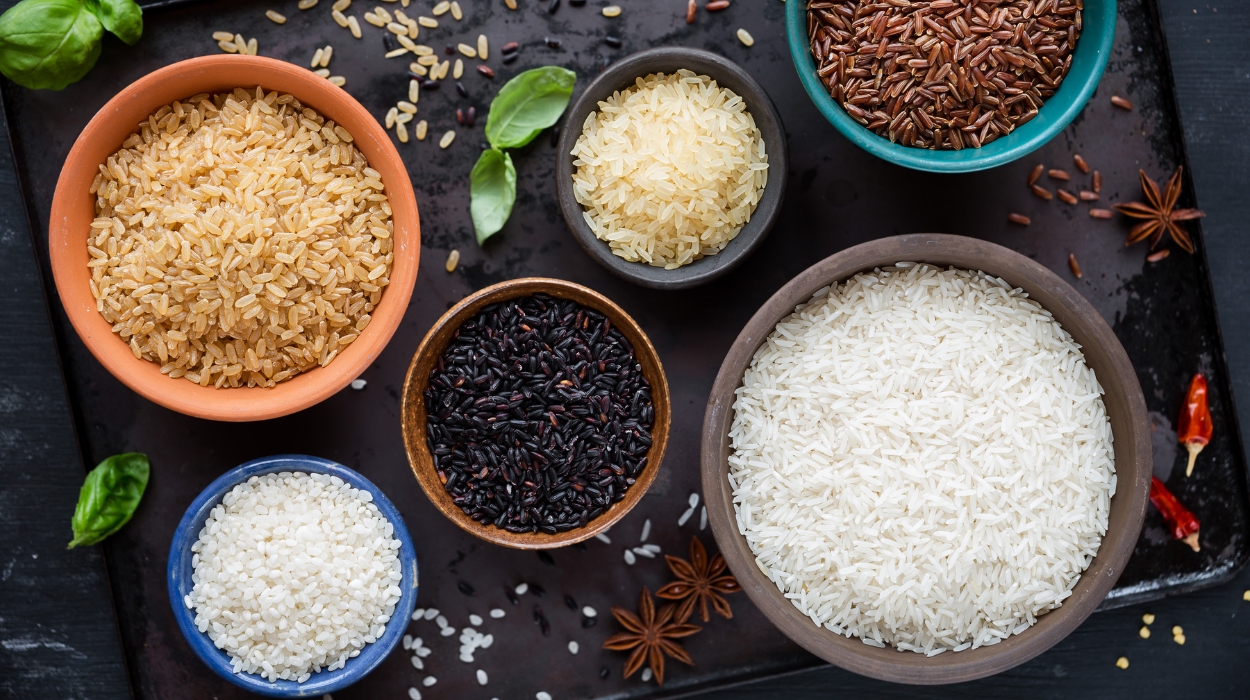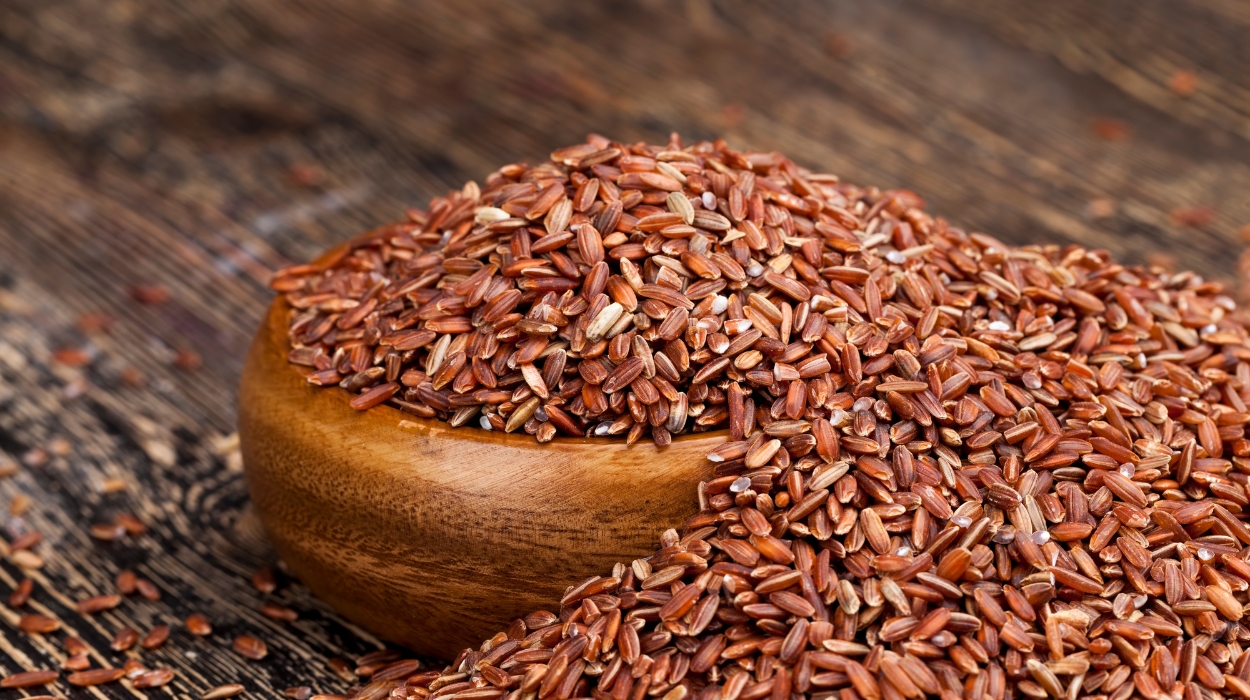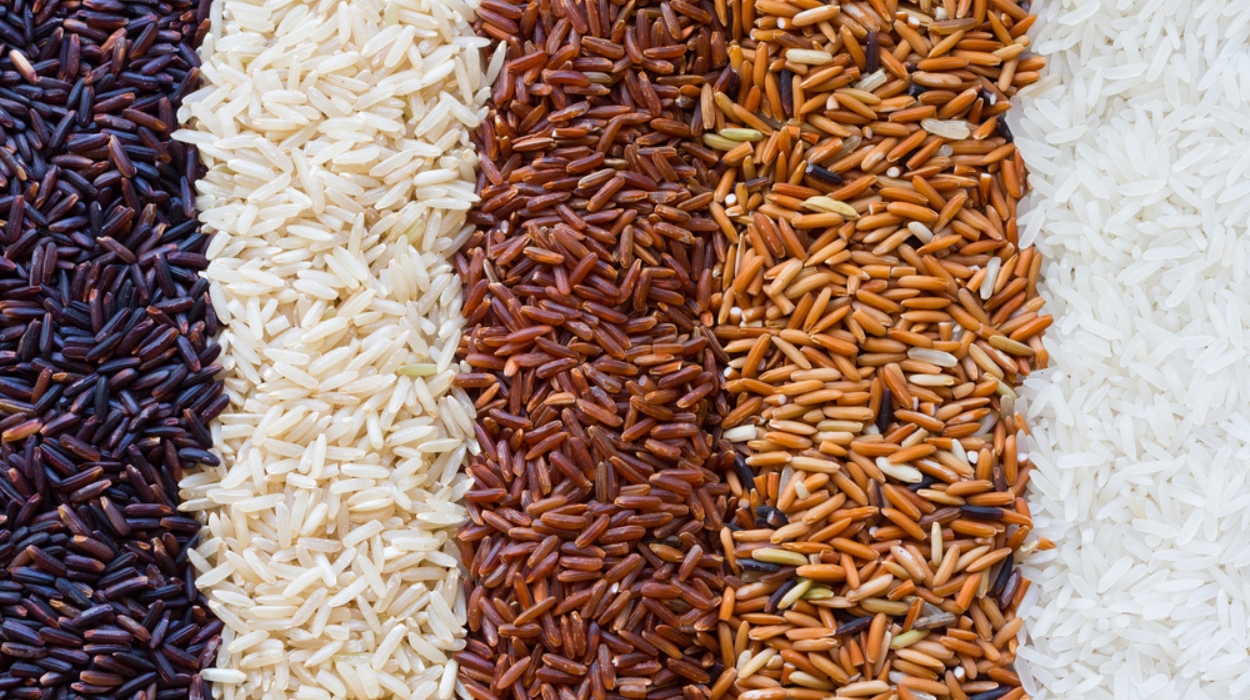You’ve probably heard that carbs are bad for weight loss, but like most health claims, there’s much more to it.
There’s a reason why nutritionists say, “Everything in moderation”. If you restrict yourself from foods you love, there’s a greater chance of developing an unhealthy relationship with food. Too much restriction can lead to stress and yo-yo dieting, so if you love rice, feel free to eat it!
The important part is learning how to serve yourself appropriate portions and creating balanced meals. With a variety of nutritious blends, you can avoid getting bored and fuel your body with the energy it needs.
You don’t need a fat burner to lose weight; healthy lifestyle habits with balanced eating will get you there. So, let’s dive into the different types of rice that can help with weight loss.
Best Rice To Eat For Weight Loss
High-fiber rice varieties may help you reach your weight loss goals more easily. These include:
- Black rice.
- Brown rice.
- Red rice.
- Samack rice.
- Basmati rice.
- Jasmine rice.
Best Rice For Weight Loss

Research suggests[1] that the type of rice can slightly impact weight. Let’s break down the best types of rice to eat for weight loss:
Brown Rice
Brown rice became popular over the last decade thanks to nutritionists pushing for more consumption of whole grains.[1] Unlike white rice, brown rice is not as heavily processed. It still has its outer bran and germ, which means it has more fiber,[2] vitamins, and minerals.
Fiber helps digestion, keeps you fuller longer, and maintains a healthy gut. A balanced gut microbiome shouldn’t be overlooked since it’s highly associated with a healthy weight. If you’re wondering how much fiber per day to lose weight is best, experts recommend 25-35 grams.[3]
According to a 2021 meta-analysis on people with pre-diabetes or type 2 diabetes,[4] replacing white rice with brown rice led to significant health benefits. Specifically, participants had reduced body weight and improved cholesterol levels.
Black Rice
Studies show that black rice can help with weight management[5] and reduce the risk of type 2 diabetes. Like brown rice, its high fiber content can reduce hunger and lower daily calorie intake, leading to weight loss.
Also, foods rich in color are often rich in antioxidants.[6] Black rice, in particular, has high amounts of anthocyanins, which fight inflammation. Since obesity is linked with chronic inflammation,[7] eating more antioxidant-rich foods can aid your weight-loss efforts.
Red Rice

Red rice is known for its nutty flavor and high nutritional value. Like black rice, red rice has high amounts of anthocyanins[8] which have been shown to help with weight management.[9]
In general, people eating high-antioxidant foods tend to have a healthier weight.[10] Fortunately, these colored rice varieties are full of antioxidants and fiber, leading to healthier weight through smoother bowel and metabolic functions, too.
Samak Rice
Also known as barnyard millet,[11] samak rice is a gluten-free and fiber-rich rice alternative. It has a low glycemic index,[12] or GI, meaning it doesn’t spike your blood sugar which helps with appetite regulation.
Its high fiber content also promotes satiety and aids weight loss by reducing your appetite[13] and offering longer-lasting energy.
Basmati Rice
This long-grain variety is a staple food in many Indian and Middle Eastern dishes. Like the other varieties of rice, it also has a lower GI than other types of white rice. This leads to more stable blood sugar levels, working to regulate your appetite and avoid sugar cravings.
Jasmine Rice
While jasmine rice is a type of white rice, it has a slightly higher fiber content and unique flavor. It works well with Southeast Asian cuisine, such as stir-fries and curries. It has a higher GI than whole grain rice, so it’s important to watch your portions and pair it with fiber-rich veggies.
In the end, any rice can work for a weight loss diet. Watching your portion sizes can help you stay within your desired carbs per day to lose weight.
What To Consider When Choosing A Healthy Type Of Rice
If you’re focusing on weight control or blood sugar management, you’ll want to look out for certain factors, such as:
- Glycemic index: Choose rice with a lower GI to help slow the rise of your blood sugar levels. This includes black, brown, samak, and red rice.
- Nutritional value: Look for varieties of rice that are rich in vitamins and minerals. This includes whole grain rice that is a good source of B vitamins, iron, magnesium, and selenium. Check the nutrition facts label to see.
- Whole grain: Refined grains have the bran and germ removed, which lowers the nutritional content. Aim for whole grains that include the bran, germ, and endosperm for added fiber. This helps with blood sugar levels[14] and can help reduce cravings.
- Portion sizes: A standard serving of rice is about half a cup[15] cooked. It’s easy to overdo rice portions and you still want a calorie deficit to lose weight, so measure it out before placing it on your plate.
Conclusion
The type of rice you choose can impact the types of nutrients you’re consuming. The more fiber content that a variety of rice has, the more it can help with weight loss efforts.
Of course, adding other healthy lifestyle habits to your dietary choice in rice can help make a bigger impact on your health goals. This includes exercising, managing stress, and drinking water to lose weight.
Choosing a type of rice for weight loss depends on flavor preferences and individual needs. What’s most important of all is choosing a variety you love and eating balanced meals with appropriate portion sizes.
Frequently Asked Questions
Whole-grain rice varieties are good for a weight-loss diet. This includes black, brown, and red rice. They’re high in fiber, antioxidants, and other nutrients compared
There’s no direct method for targeting belly fat. However, eating rice varieties that are high in fiber, like brown or black rice, can help with general fat reduction.
This varies by individual. Choose a fiber-rich variety you enjoy and make it part of a balanced diet, or talk to a nutritionist for individualized advice.
Yes, it’s possible to eat rice and still lose weight. Aim for whole grains to help maximize weight loss goals. Also, be mindful of portion sizes and an overall balanced diet.
 Evidence Based
Evidence Based
